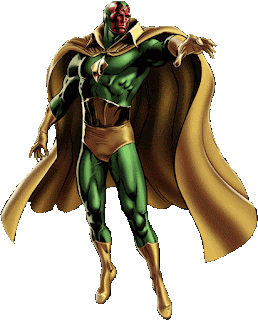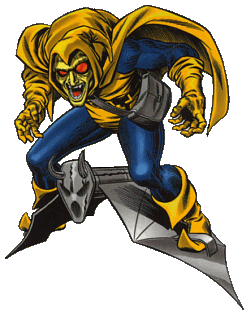 By today's standards, and perhaps even those of a decade or two ago, the mid-1982 series Marvel Super Hero Contest of Champions comes across as formulaic in terms of what a comics reader could expect from a story that featured such a roundup of Marvel characters all gathered under one roof to confront an imminent threat. That assessment would certainly apply to any story that had the cosmic gamer known as the Grandmaster as its protagonist--who by his very nature needed no variation from the life-or-death contests that are his stock in trade. At this point in time, the Grandmaster had only approached Kang the Conqueror and the Prime Mover to coax into playing his high-stakes game; in this latest series, his opponent would be an enigmatic figure only referred to as the Unknown, whom sharp-eyed long-time readers are going to almost instantly recognize as the hooded representation of Death.
By today's standards, and perhaps even those of a decade or two ago, the mid-1982 series Marvel Super Hero Contest of Champions comes across as formulaic in terms of what a comics reader could expect from a story that featured such a roundup of Marvel characters all gathered under one roof to confront an imminent threat. That assessment would certainly apply to any story that had the cosmic gamer known as the Grandmaster as its protagonist--who by his very nature needed no variation from the life-or-death contests that are his stock in trade. At this point in time, the Grandmaster had only approached Kang the Conqueror and the Prime Mover to coax into playing his high-stakes game; in this latest series, his opponent would be an enigmatic figure only referred to as the Unknown, whom sharp-eyed long-time readers are going to almost instantly recognize as the hooded representation of Death.From the dramatic layout of its first issue's cover, the scope of this story would appear to vastly differ from the Grandmaster's other two incursions involving humans, though the cover's wording is playing fast and loose with the story's premise. At first glance, it seems that the Grandmaster's human "players" will involve not just a few Avengers or Defenders, but "every single super hero on Earth--in the greatest battle of all!", a bold caption which doesn't hold up to scrutiny. While every super hero on the planet is indeed present and accounted for, the contest itself pares down the actual contestants substantially, with only twenty-four heroes being chosen by both the Grandmaster and the Unknown to participate. As to whether the story presents the greatest battle of all, that would be debatable, even at its conclusion; regardless, this saga is hardly the three-issue free-for-all that its cover implies. Quite the opposite, in fact.
Yet there are a few points we can check off which distinguish this series:
☑ It's the first of Marvel's titles to bear the "limited series" label--a format which would go on to be a popular seller, featuring a number of Marvel's characters in various stories that would often expand on events in their regular monthly titles.
☑ The nature of this gathering shows all the signs of being the precursor to Marvel Super Heroes Secret Wars, which would be published two years later--another series that had large groups of heroes whisked away from Earth, materializing in a "way station" in space, and confronted with a power that held their collective fate in its hands, a process that also presented different heroes meeting and working with each other for the first time.
☑ Collectively, the three issues feature a six-page compendium of every Marvel hero that exists to date--presumably spearheaded by Mark Gruenwald, who edited the project and would go on to serve the company as a virtual archivist of its characters, history, and continuity. This listing has been referred to as the prototype of The Official Handbook of the Marvel Universe, a 15-issue series which would see its first issue published just six months later and would include a wide variety of Marvel's creations--villains and heroes alike, as well as other characters, entities, or aliens that were a part of Marvel stories.
As for the story itself, there's little to surprise the reader that he or she hasn't seen replayed in half a dozen epics or crossover events where heroes gather en masse, though this series may well have inadvertently paved the way for those stories. Unfortunately, with the two-page spread in the center of its first issue, the series already plays its trump card when it features an impressive gathering of all the heroes assembled in the same chamber, followed by three or so pages of first-time meetings and touching base with a few major characters--and that would be that, as far as the bulk of this series' huge cast of characters is concerned. Given how whittled down the story becomes from that point, this three-issue mini-series could just as well have been adapted to an Annual or a What If story, though it seems clear the company's intent was to reach a wider audience with a stand-alone title.
But let's explore what we have--as we begin with our two protagonists, who set the stage for what's to come.













































